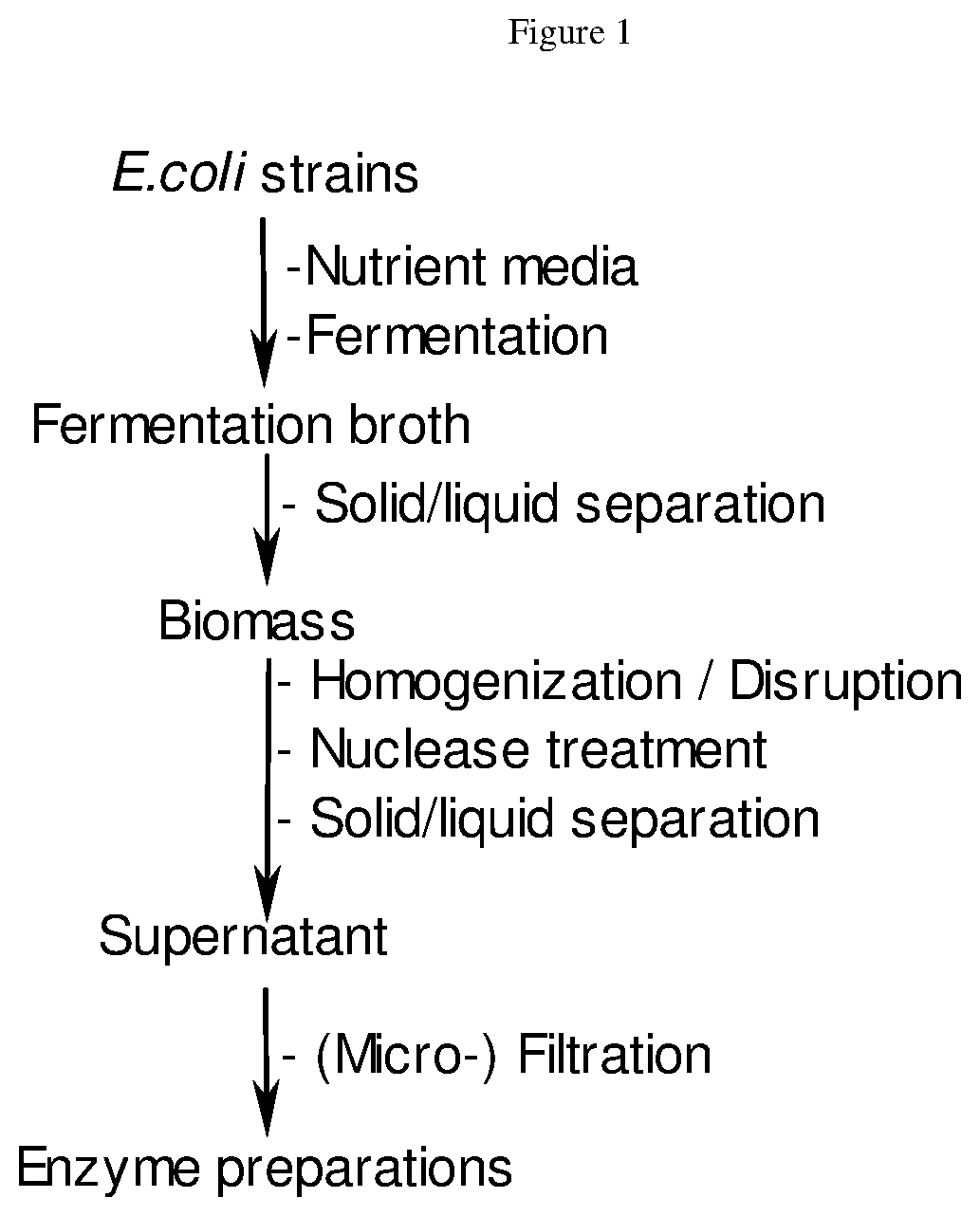Enzyme products
a technology of enzyme products and purification process, which is applied in the direction of peptides, transferases, peptide sources, etc., can solve the problems that several process designs are not suitable to reduce the content of recombinant dna in a sufficient way, and achieve the effect of improving the overall work-up procedur
- Summary
- Abstract
- Description
- Claims
- Application Information
AI Technical Summary
Benefits of technology
Problems solved by technology
Method used
Image
Examples
example 1
g of a Recombinant Enzyme Product with Composition I
[0199]A crude cell extract of recombinant sucrose synthase from Arabidopsis thaliana (NCBI Reference Sequence: NP_197583.1, SEQ ID NO:3) is prepared by homogenization of biomass of the recombinant expression host LE1B109, carrying the sucrose synthase gene encoded on the expression plasmid pLE1A27, a derivative of well-known vector pRSF-1b, and expressing the sucrose synthase intracellularly. The biomass to be homogenized is a concentrated cells preparation obtained by concentration of the fermentation broth adjusted to a biomass equivalent of 600 g / L. After homogenization composition I is obtained.
[0200]This Composition I is divided into separate fractions, from which each fraction is independently submitted to one of the following process treatments corresponding to the process steps according to the first aspect of the invention in the indicated numerical order:
Nuclease Precipitation and Fraction treatmentsolid / liquid separation...
PUM
| Property | Measurement | Unit |
|---|---|---|
| temperature | aaaaa | aaaaa |
| temperature | aaaaa | aaaaa |
| pH | aaaaa | aaaaa |
Abstract
Description
Claims
Application Information
 Login to View More
Login to View More - R&D
- Intellectual Property
- Life Sciences
- Materials
- Tech Scout
- Unparalleled Data Quality
- Higher Quality Content
- 60% Fewer Hallucinations
Browse by: Latest US Patents, China's latest patents, Technical Efficacy Thesaurus, Application Domain, Technology Topic, Popular Technical Reports.
© 2025 PatSnap. All rights reserved.Legal|Privacy policy|Modern Slavery Act Transparency Statement|Sitemap|About US| Contact US: help@patsnap.com

